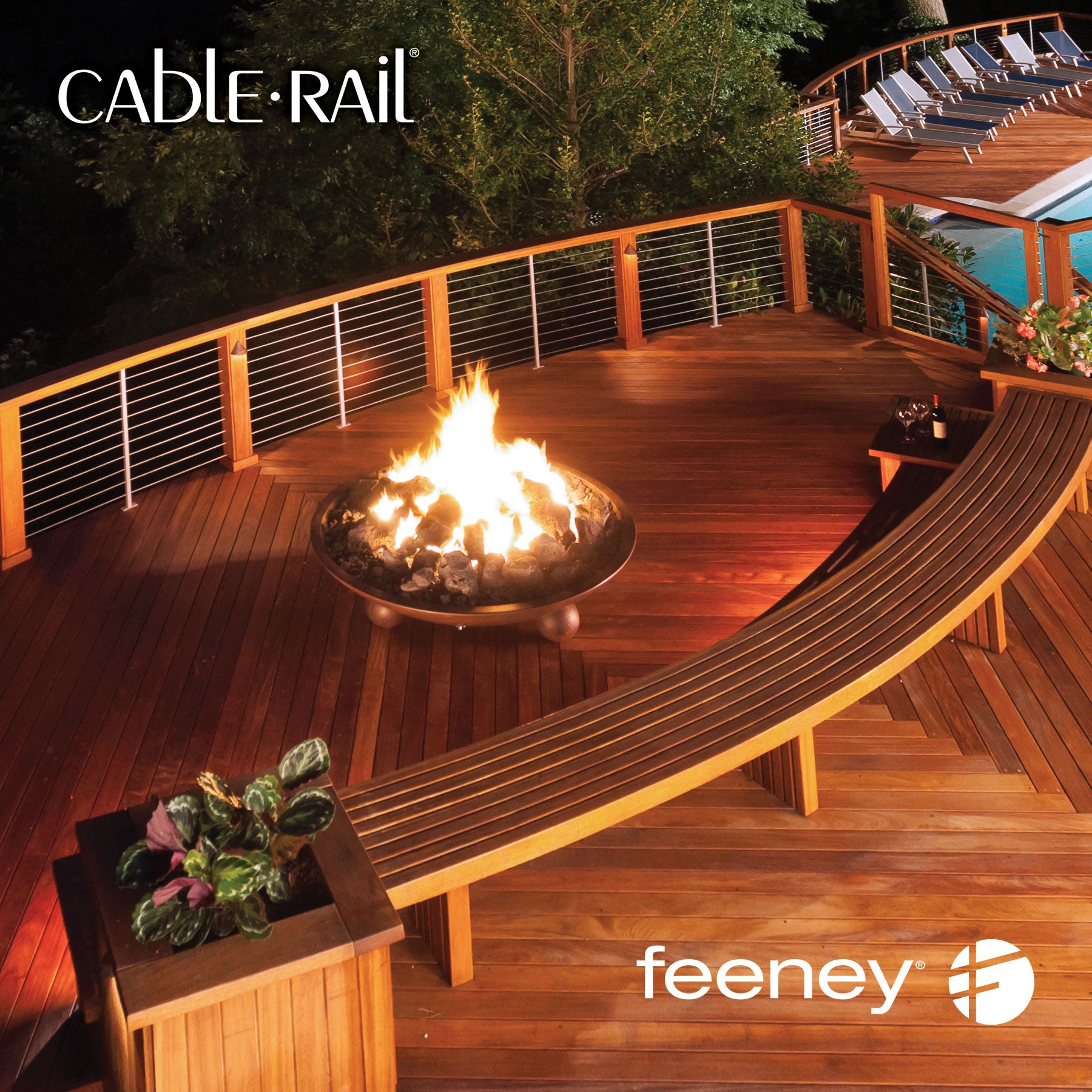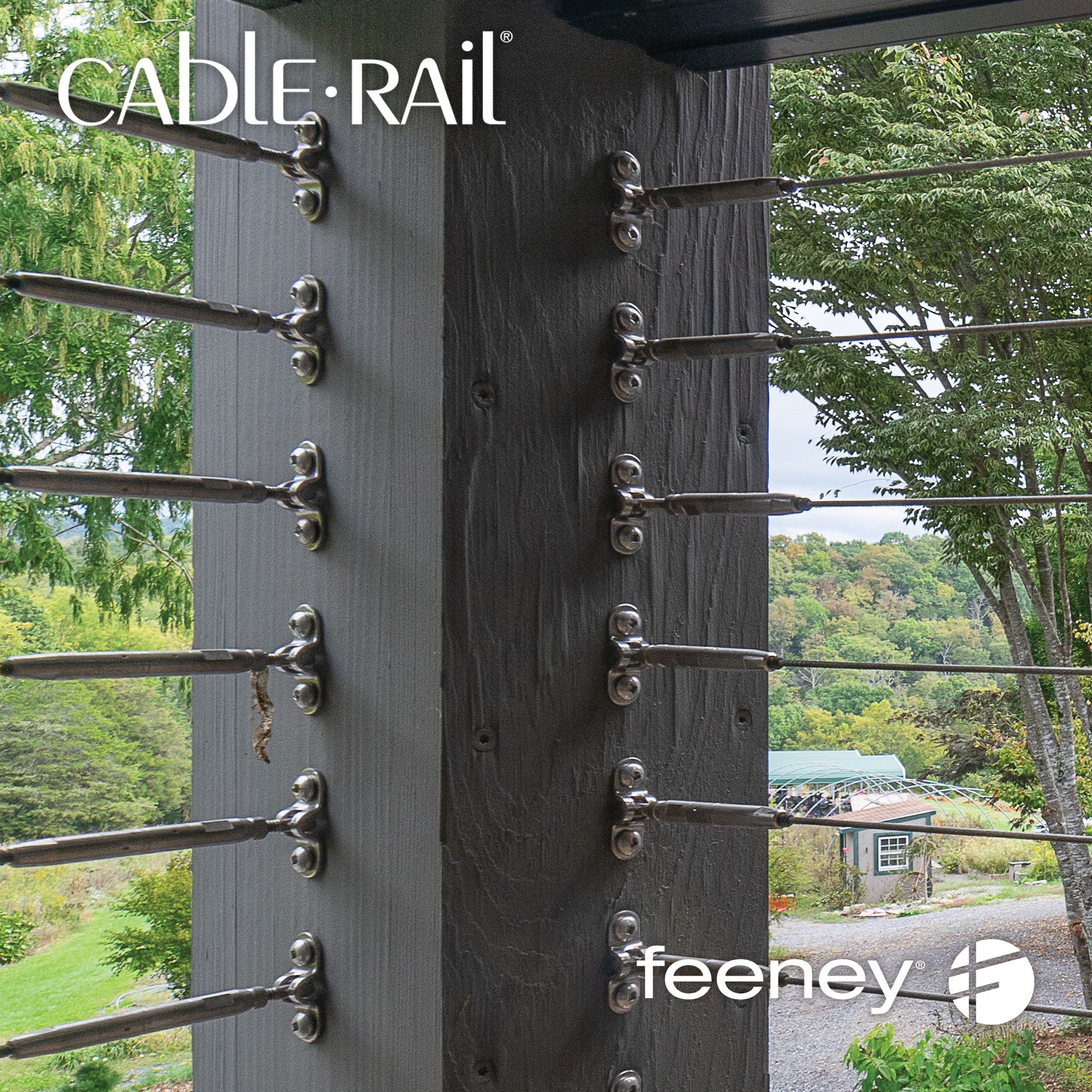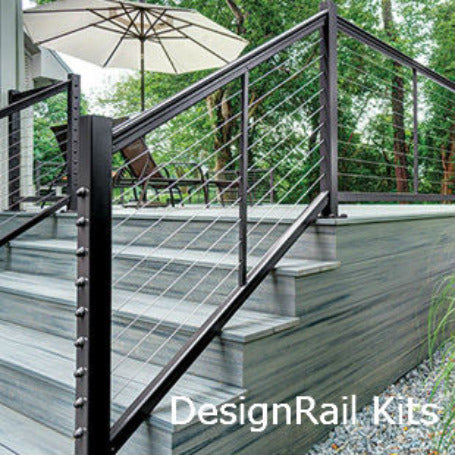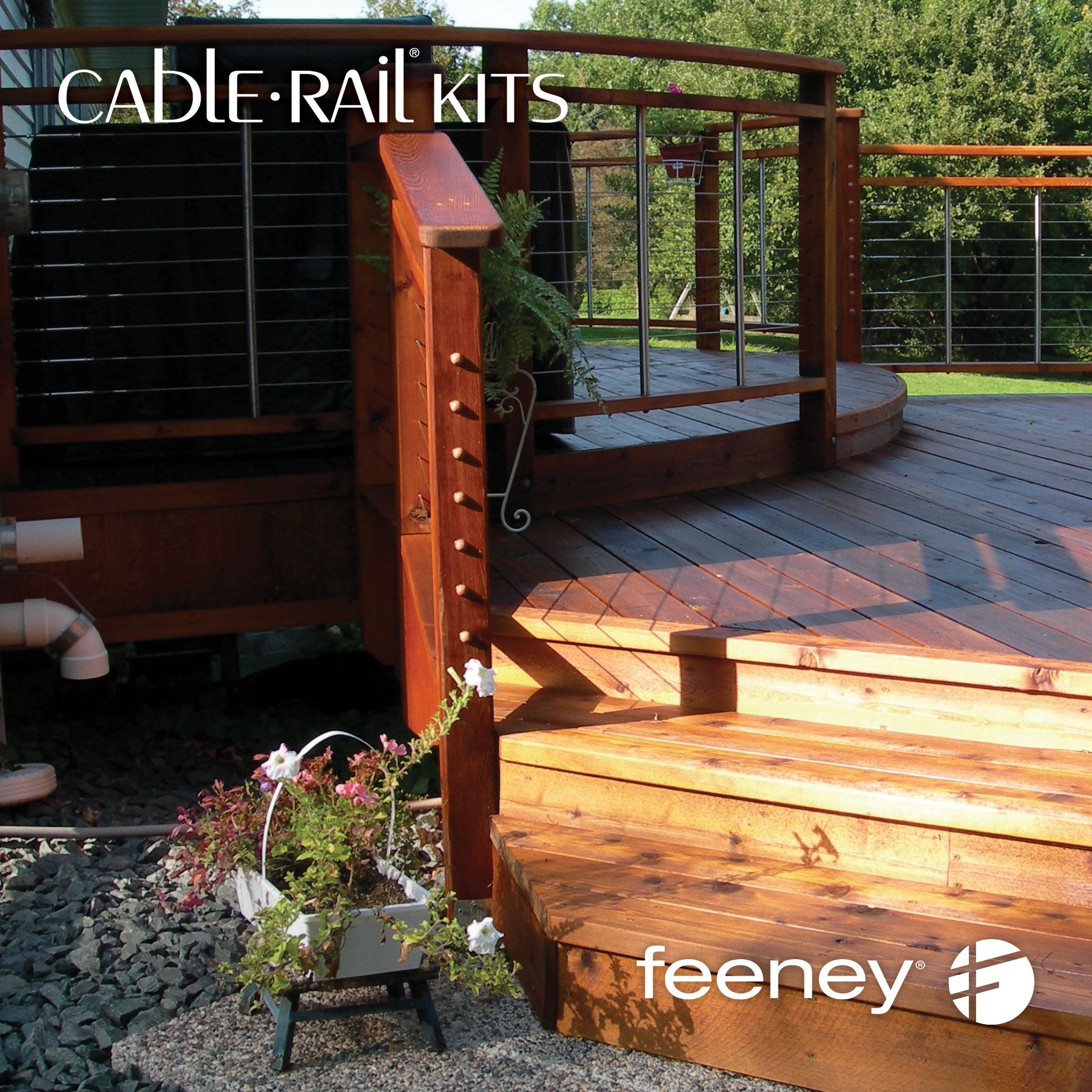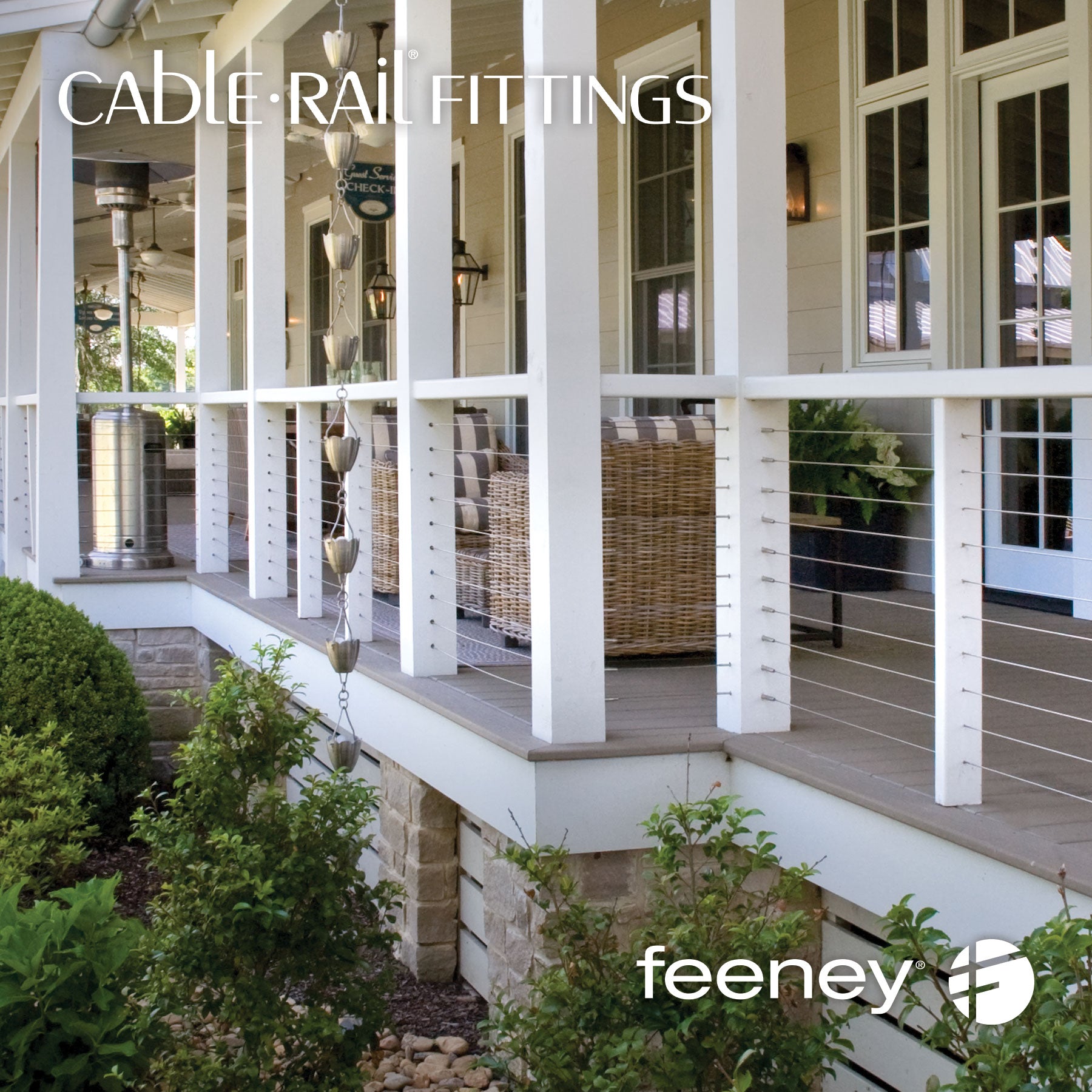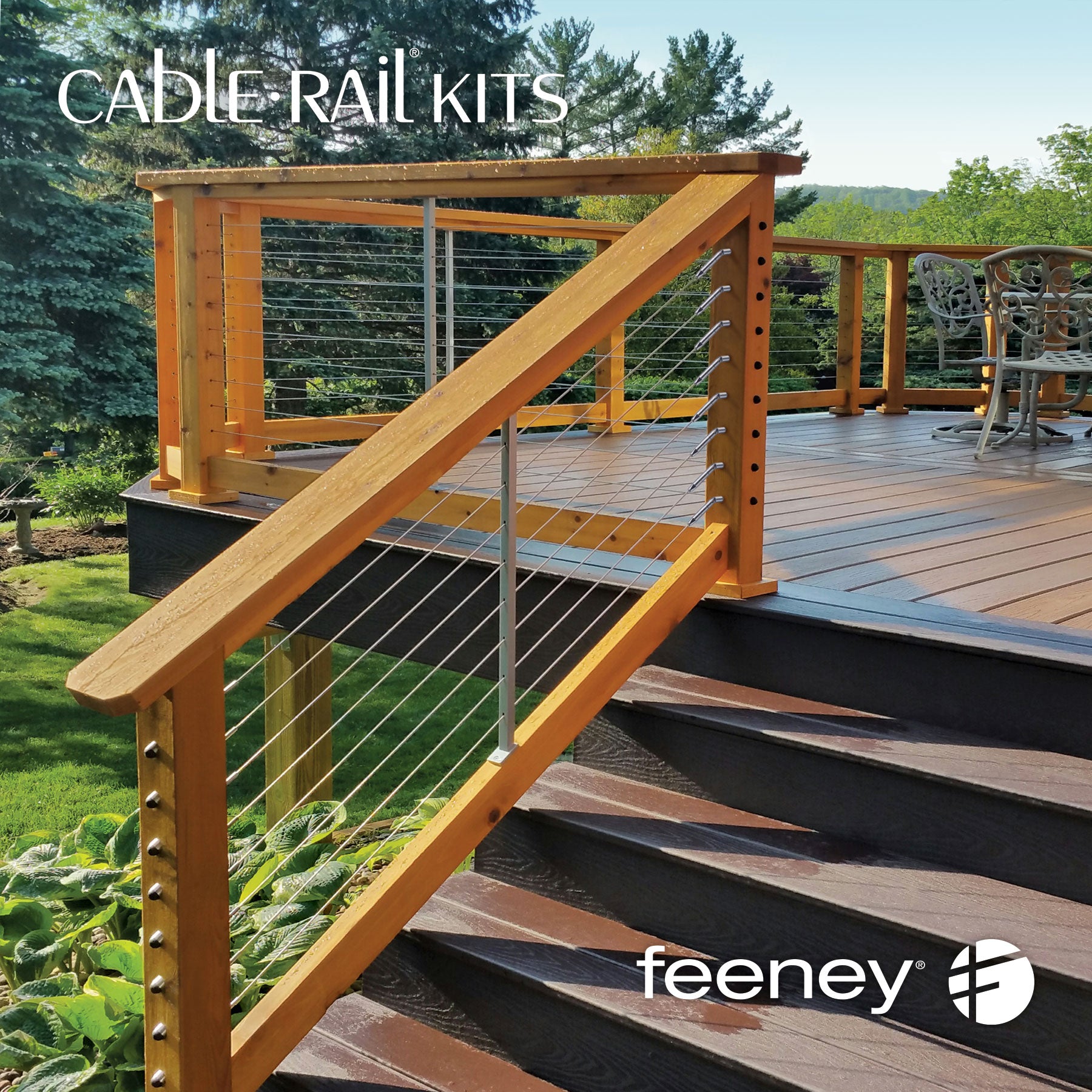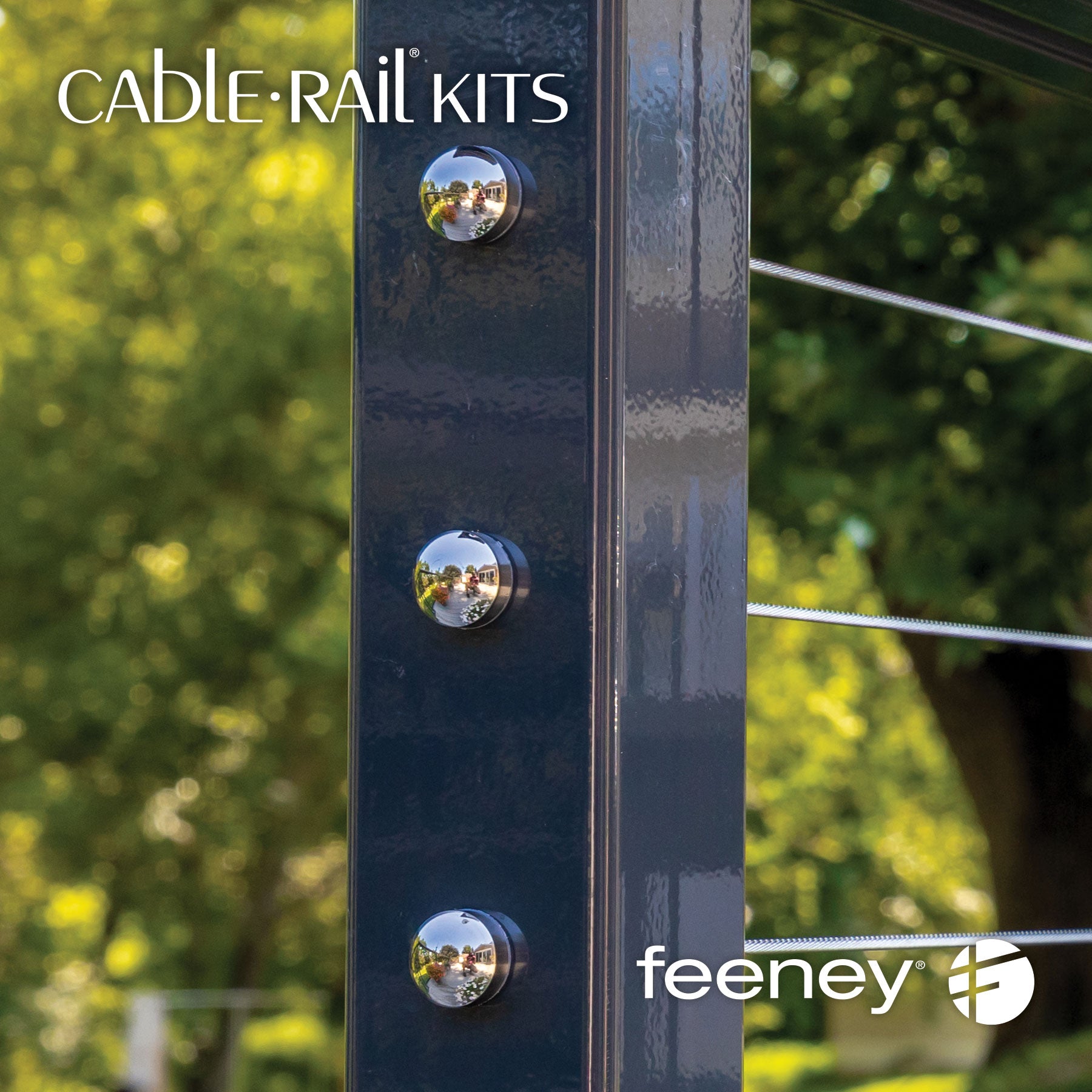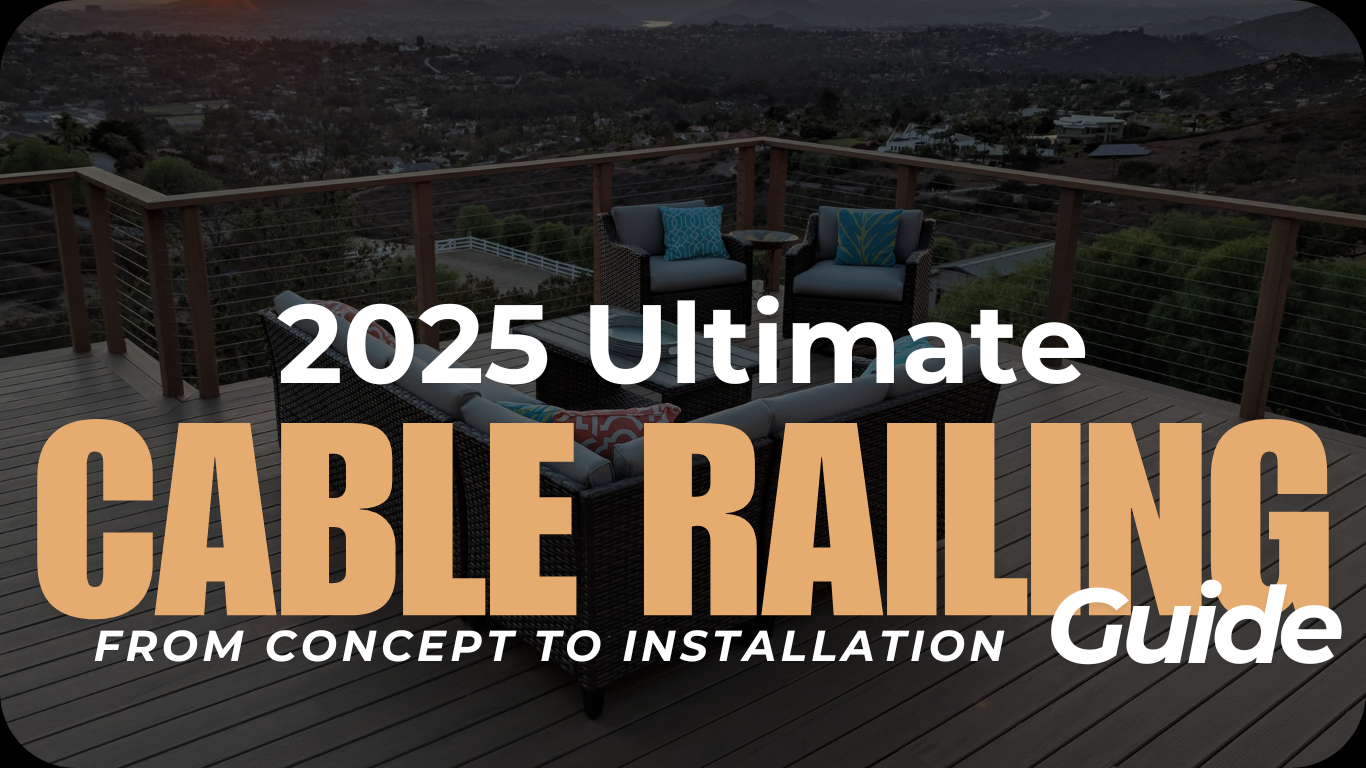
2025 Ultimate Cable Railing Guide: From Concept to Installation
2025 Ultimate Cable Railing Guide: From Concept to Installation
Cable railing systems have revolutionized modern architecture, offering a perfect blend of style, durability, and functionality. Whether you're renovating your deck or planning a new construction project, this comprehensive guide will walk you through everything you need to know about cable railings, from their benefits and design considerations to installation tips and maintenance best practices.
In the journey to create the ultimate cable railing guide for 2025, understanding key statistics and trends in the market is crucial. Below is a table of data that showcases current patterns and insights, providing you with a foundation for making informed decisions regarding cable railing installations and average costs .
|
Year |
Market Growth (%) |
Popular Material |
Average Installation Cost ($) |
Customer Satisfaction (%) |
|
2023 |
5.5 |
Stainless Steel |
1,200 |
87 |
|
2024 |
6.2 |
Aluminum |
1,350 |
89 |
|
2025 (Projected) |
6.8 |
Composite |
1,500 |
91 |
"Planning your cable railing project with these insights can help simplify your installation experience, leading to a fun and successful outcome!"
DIY cable railing installations have increased by 40% in the past two years.
The Ultimate Cable Railing Guide for 2025
Understanding Cable Railing Systems
Cable railings use tensioned stainless steel cables strung horizontally or vertically between posts, creating a sleek, minimalist look that enhances visibility while maintaining safety standards. These innovative systems are suitable for both indoor and outdoor applications, including decks, balconies, staircases, and more.
Types of Cable Railing Systems
-
Post-to-Post: Cables are tensioned between vertical posts, offering a clean, streamlined look.
-
Through-Post: Cables run through drilled holes in intermediate posts, providing additional support and a unique aesthetic.
-
Vertical Cable Systems: Cables are attached vertically between a top and bottom rail, offering an alternative to traditional horizontal layouts.
-
Panel Systems: Prefabricated panels are installed between primary posts, simplifying the installation process but requiring additional framework.
Why Choose Cable Railings for Your Home
Cable railing systems offer numerous advantages that make them an attractive option for homeowners and architects alike. Here at CableRailDirect, we like to cover all the angles and possibilities when suggesting or reviewing the possibility of installing one cable railing system over another. Below we have presented you with some of the reasons a homeowner, business owner, or designer may choose to go with cable railing as their primary selection in comparison to other systems:
-
Unobstructed Views: The thin profile of cables allows for maximum visibility, perfect for scenic locations.
-
Durability: Made from high-quality stainless steel, cable railings resist corrosion and withstand harsh weather conditions.
-
Modern Aesthetic: The sleek design complements various architectural styles, from contemporary to traditional.
-
Low Maintenance: Unlike wood railings, cable systems require minimal upkeep, saving time and money long-term.
-
Versatility: Suitable for a wide range of applications in both residential and commercial settings.
-
Increased Property Value: As a long-term investment, cable railings can enhance your property's appeal and value.
-
DIY-Friendly: With proper planning and attention to detail, many homeowners can successfully install cable railings themselves.
Cable railings can increase property value by up to 7%.
Explore a wide range of cable railing options to suit your specific needs at Cable Rail Direct.com
Expert Tips for a Flawless Cable Railing Setup
Before you jump into installation, planning and design hold the key to a successful cable railing project. Cable Railing Systems' setup can be straightforward and even enjoyable with the right preparations. At CableRailDirect, we've gathered extensive materials, including documents, installation manuals, and reference guides to support your cable railing adventure. Need further assistance? Our expert customer service team is ready to help, six days a week, with any questions about installation, longevity, safety, maintenance, or just to share some tips for achieving a flawless cable railing setup.
-
Measure Your Space: Accurately measure the area where you'll install the railing, including length, height, and any angles or curves.
-
Check Local Building Codes: Ensure your design complies with local regulations regarding railing height, cable spacing, and load-bearing requirements.
-
Choose Your Style: Decide between horizontal or vertical cable orientation, and select post materials (wood, metal, or composite) that complement your space.
-
Plan for Safety: Ensure cable spacing doesn't exceed 4 inches to prevent children from slipping through.
-
Consider Aesthetics: Choose cable fittings and post caps that enhance your overall design vision.
-
Assess Structural Integrity: If adding to an existing structure, evaluate its ability to support the new railing system.
-
Budget Considerations: While initial costs may be higher, factor in long-term savings from durability and low maintenance.
For expert design consultation and a wide range of cable railing options, contact or visit Cable Rail Direct online. Their team can help you create a custom solution that meets both safety standards and your aesthetic preferences.
Step-by-Step: Installing Cable Railings Made Simple
While professional installation is recommended for complex projects, many homeowners with DIY experience can install cable railings. Here's a general overview of the process:
-
Prepare the Area: Clear the installation site and gather all necessary tools and materials.
-
Install End Posts: Securely attach end posts to your deck or floor, ensuring they're plumb and level.
-
Add Intermediate Posts: Install intermediate posts at regular intervals (typically every 3-4 feet) for proper support.
-
Attach Top Rail: Secure the top rail to the posts, making sure it's level and properly supported.
-
Install Cable Fittings: Attach cable fittings to the end posts according to the manufacturer's instructions.
-
Run the Cables: Thread the cables through intermediate posts (if using a through-post system) or attach them to fittings on each post.
-
Tension the Cables: Gradually tighten each cable to achieve proper tension, typically using a cable tensioner tool.
-
Final Adjustments: Make any necessary adjustments to ensure all cables are evenly tensioned and the system is secure.
For more detailed steps and video tutorials, visit CableRailDirect.com Installation Guide.
Common Mistakes and How to Avoid Them
When I first decided to install cable railing on my oceanfront deck, I thought it would be a straightforward weekend project. Little did I know that my hastily planned installation would lead to a complete do-over and valuable lessons learned. Today, I'm sharing these insights to help others avoid the common pitfalls in cable railing installation.
Modern cable railing systems have revolutionized deck and stairway aesthetics, offering unobstructed views while maintaining robust safety standards. However, this statistic shouldn't lull homeowners into a false sense of security – proper installation requires careful attention to detail.
-
Proper Planning: Carefully measure and plan your layout before beginning installation to avoid costly mistakes.
-
Post Strength: Ensure your posts are sturdy enough to withstand the tension of the cables. Reinforcement may be necessary for existing structures.
-
Correct Spacing: Adhere to local building codes for cable spacing to ensure safety, particularly for children and pets.
-
Tension Adjustment: Learn proper tensioning techniques to avoid over or under-tightening, which can affect both safety and aesthetics.
-
Weather Considerations: If installing outdoors, choose materials rated for your climate to ensure longevity.
1. Inadequate Planning and Measurement
One of the most frequent mistakes occurs before the first tool is even picked up. Rushing into installation without a comprehensive plan can result in misaligned posts, incorrect spacing, and wasted materials.
Solution: Create a detailed layout drawing, including:
-
Exact measurements between posts
-
Cable spacing requirements
-
Termination points
-
Required hardware locations
2. Underestimating Post Strength Requirements
Many DIY installers overlook the significant tension forces that cable systems place on posts. A properly tensioned cable system can exert hundreds of pounds of force on each post.
Solution:
-
Use high-quality posts from reliable manufacturers
-
Ensure proper anchoring to the substructure
-
Consider additional reinforcement for existing posts
-
Install proper backing plates where needed
3. Incorrect Cable Spacing
Building codes typically require cables to be spaced no more than 3-4 inches apart. Improper spacing not only violates code requirements but can create safety hazards.
Solution:
-
Research local building codes before installation
-
Use a spacing template to ensure consistent gaps
-
Pay special attention to spacing near stairs and angles
-
Consider using pre-drilled posts for perfect spacing
4. Improper Tensioning Techniques
Achieving the right tension is crucial for both safety and aesthetics. Over-tensioning can damage hardware and posts, while under-tensioning creates unsafe slack.
Solution:
-
Follow manufacturer tensioning specifications
-
Use a proper tensioning tool
-
Tension cables in sequence, starting from the middle
-
Re-check tension after 24-48 hours of initial installation
5. Weather Considerations and Material Selection
When it comes to installing a cable railing system, understanding your environmental conditions is key to ensuring longevity and safety. Living near the coast? Opt for marine-grade stainless steel to combat corrosion. For areas with extreme temperatures, consider thermal expansion to avoid unwanted tension in your cables. Don’t forget the importance of applying the right sealants and protective coatings to fortify your system. Also, invest in weather-resistant hardware that’s specially designed to withstand your local climate challenges. By addressing these factors, you can ensure your railing system remains robust, beautiful, and secure for years to come.
Problem? How to ensure longevity and safety in your cable railing products and understanding environmental conditions.
Solution:
-
Select marine-grade stainless steel for coastal environments
-
Consider thermal expansion in extreme temperature areas
-
Use appropriate sealants and protective coatings
-
Choose weather-resistant hardware designed for your climate
Looking Forward: Professional Results Through Proper Preparation
The key to a successful cable railing installation lies in thorough preparation, quality materials, and attention to detail. While DIY installation can save money, it's crucial to invest time in understanding the process and requirements before beginning.
Ready to start your cable railing project? Visit CableRail Direct for premium materials, comprehensive installation guides, and expert support. Their professional-grade products and detailed instructions ensure your project will stand the test of time while maintaining its stunning appearance for years to come.
Remember: The difference between a problematic installation and a professional-looking result often comes down to proper planning and using the right materials. Don't compromise on quality – your safety and satisfaction depend on it. For detailed installation guides, tools, and high-quality cable railing components, visit Cable Rail Direct. Their extensive product line includes everything you need for a successful installation.
How Cable Railings Enhance Safety and Style
Safety should be your top priority during installation and use of cable railings. When properly installed and meticulously maintained, cable railing systems offer not only a visually appealing design but also ensure a sturdy and safe barrier for any space. This dual-functionality makes cable railings a popular choice among homeowners and building professionals alike.
While your cable railing might look amazing, it's the safety features that keep you and your family protected. Make sure to get the tension right, choose the right materials, and follow local building codes to keep your installation safe. Planning ahead can make a big difference in both safety and cost. By measuring carefully and buying the right lengths and fittings, you can avoid spending too much and keep the railing dependable. A good plan can make installation easy and enjoyable! Check your cable railing often, tighten the cables if they get loose, and look for any wear or damage. This will help your railing last longer and stay safe so you can enjoy the view for years.
Recap:
-
Double-check all connections and tension levels before considering the project complete.
-
Use appropriate personal protective equipment (PPE) throughout the installation process.
-
If you're unsure about any aspect of the installation, consult with a professional to ensure safety and compliance.
-
Regularly inspect your cable railing system for any signs of wear or damage.
Maintenance Tips to Keep Your Railings Looking New
A well-maintained cable railing system not only ensures lasting safety but also preserves the stunning modern aesthetic that draws homeowners to this innovative design choice. Whether installed on a deck, balcony, or staircase, proper care of your cable railing system will protect your investment and maintain its eye-catching appeal for years to come.
When I first installed cable railing on my oceanfront deck in Newport, I didn't realize how transformative it would be. Not only did it open up my view of the coastline, but it also added an unmistakable modern touch to my traditional home. Five years later, my railing still looks as striking as the day it was installed – all thanks to a simple maintenance routine I've perfected.
Regular inspection and cleaning form the cornerstone of cable railing maintenance. Begin by examining the entire system quarterly, paying special attention to the cable tension. Use a cable tension gauge to ensure tensions remain within manufacturer specifications – typically between 200-400 pounds depending on your system. Clean the cables and posts using a soft cloth dampened with warm water and mild soap, being careful to avoid harsh chemical cleaners that could damage the protective coating. For coastal installations or areas with high pollution, monthly cleaning may be necessary to prevent corrosion and maintain that pristine shine.
Living by the coast has taught me the importance of preventive care. I've learned that addressing small issues immediately prevents bigger problems down the road. My dedication to maintenance has kept my railing looking pristine through seasons of salt spray and coastal storms, proving that a little regular attention goes a long way.
Beyond routine care, several preventive measures can significantly extend your railing's lifespan. Apply a marine-grade stainless steel protectant twice yearly to create an invisible barrier against environmental damage. Promptly address any signs of rust by gently removing it with a non-abrasive pad and applying a rust inhibitor. Additionally, ensure proper drainage around post bases to prevent water accumulation, which can lead to premature wear.
To keep your cable railing system in top condition and ensure its longevity:
-
Regular Cleaning: Clean cables and posts with mild soap and water to prevent dirt buildup and maintain their appearance.
-
Inspect Regularly: Check for loose fittings, frayed cables, or signs of wear at least once a year.
-
Tension Check: Annually inspect cable tension and adjust as needed to maintain system integrity.
-
Lubrication: Apply a silicone-based lubricant to cable fittings periodically to prevent corrosion and ensure smooth operation.
-
Address Issues Promptly: If you notice any damage or wear, address it immediately to prevent further problems.
Ready to enhance your space with a cable railing system that combines durability with sophisticated style? Visit CableRailDirect.com to explore their comprehensive selection of premium cable railing solutions, backed by expert support and installation guides that make maintenance a breeze. Transform your property with a railing system that's built to last and designed to impress. For maintenance products and expert advice on caring for your cable railing system, visit Cable Rail Direct. Their customer support team can provide guidance on proper maintenance techniques.
Choosing the Right Materials for Your Cable Railings
When selecting materials for your cable railing project, quality is paramount. Look for comprehensive product ranges that include:
Explore the full range of cable railing products and find everything you need for your project at Cable Rail Direct. Their extensive selection ensures you'll find the perfect components to bring your vision to life.
DIY vs. Professional Installation: What You Need to Know
Cable railing systems offer a modern, durable, and visually appealing solution for your deck, balcony, or interior space. By following this comprehensive guide and using high-quality materials, you can create a stunning and safe railing that enhances your property's value and aesthetics. Remember to prioritize safety, adhere to local building codes, and invest in quality components for the best results.
Whether you're a DIY enthusiast or prefer professional installation, cable railings provide an excellent option for those seeking to combine style with functionality. With proper planning, installation, and maintenance, your cable railing system will provide years of enjoyment and add significant value to your property.
Ready to start your cable railing project? Visit Cable Rail Direct for expert advice, top-quality products, and exceptional customer service. Their team is committed to helping you achieve the perfect cable railing system for your home or commercial space. Don't hesitate to reach out with any questions or for personalized recommendations. Transform your space with the elegance and durability of cable railings today!

